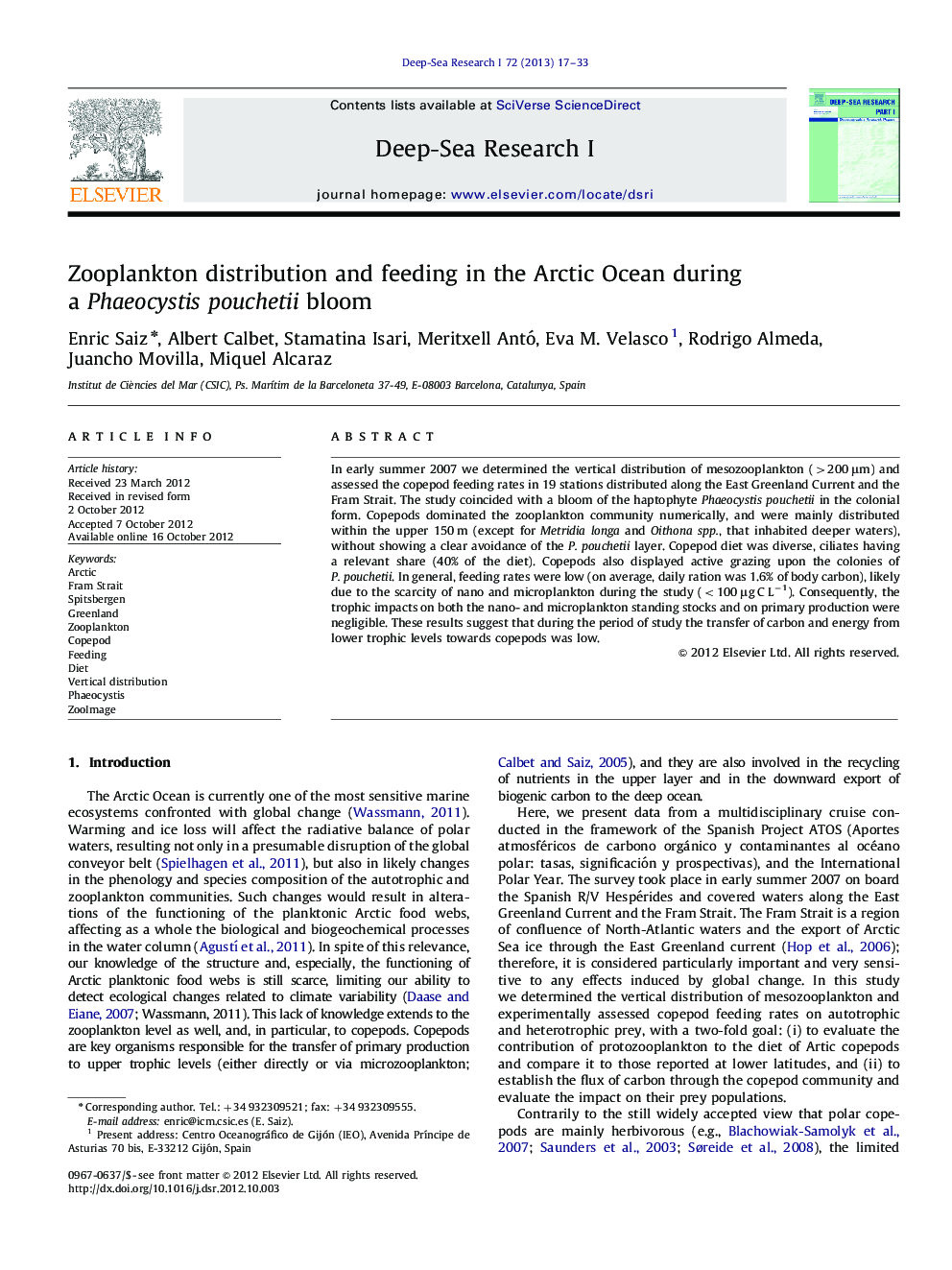| Article ID | Journal | Published Year | Pages | File Type |
|---|---|---|---|---|
| 6383783 | Deep Sea Research Part I: Oceanographic Research Papers | 2013 | 17 Pages |
In early summer 2007 we determined the vertical distribution of mesozooplankton (>200 μm) and assessed the copepod feeding rates in 19 stations distributed along the East Greenland Current and the Fram Strait. The study coincided with a bloom of the haptophyte Phaeocystis pouchetii in the colonial form. Copepods dominated the zooplankton community numerically, and were mainly distributed within the upper 150 m (except for Metridia longa and Oithona spp., that inhabited deeper waters), without showing a clear avoidance of the P. pouchetii layer. Copepod diet was diverse, ciliates having a relevant share (40% of the diet). Copepods also displayed active grazing upon the colonies of P. pouchetii. In general, feeding rates were low (on average, daily ration was 1.6% of body carbon), likely due to the scarcity of nano and microplankton during the study (<100 μg C Lâ1). Consequently, the trophic impacts on both the nano- and microplankton standing stocks and on primary production were negligible. These results suggest that during the period of study the transfer of carbon and energy from lower trophic levels towards copepods was low.
⺠Zooplankton vertical distribution was quantified using the ZooImage software. ⺠Feeding experiments were conducted coincident with a bloom of Phaeocystis pouchetii. ⺠The diet of Arctic copepods was diverse, and ciliates were relevant contributors. ⺠Copepods actively grazed on Phaeocystis pouchetii in the colonial form. ⺠Copepod exhibited low daily rations, resulting into low trophic impact on their prey.
